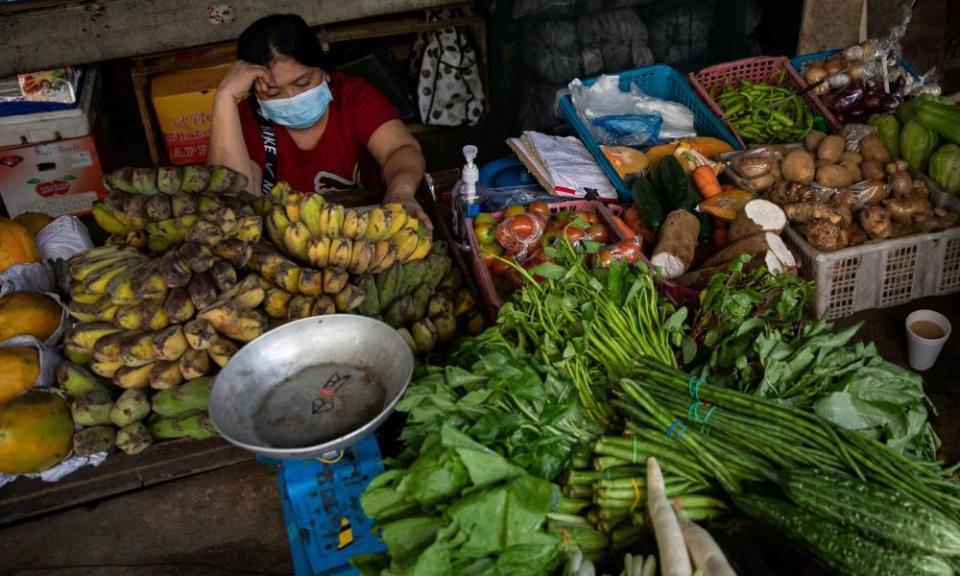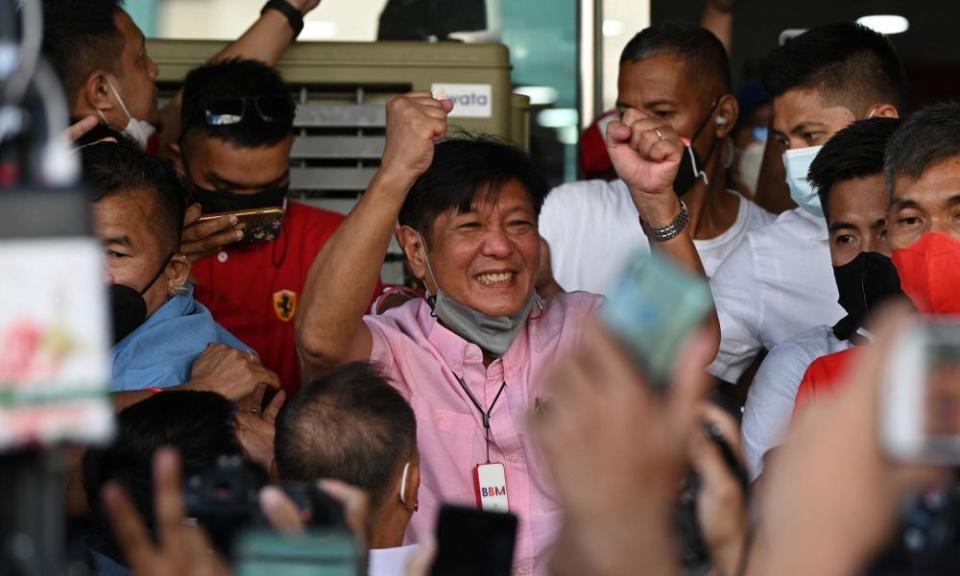In the Philippines, a bun revives myths and misery of a bygone Marcos era

It is not only the family of the late dictator Ferdinand Marcos Sr making a comeback in the Philippines. A fortified bread known as nutribun, and the controversy surrounding it, has also reappeared.
This month, a version of the snack – which was previously given to schoolchildren to tackle hunger during Marcos Sr’s regime – was spotted being distributed in Consolacion, Cebu, in the Central Visayas region. Packets bore the name of Senator Imee Marcos, daughter of the late dictator, according to news reports.
Related: Philippines election result is a win for dynasty politics
At a separate event in Davao City, on the southern island of Mindanao, the senator sparked controversy by suggesting the nutribun successfully prevented all child hunger under her father’s rule – a claim that is untrue. It was so filling that you could barely finish a portion, Imee Marcos said, adding “it’s like cement in your tummy.”
“No child went hungry then because there was an abundance of nutribun,” she said of her father’s regime.
Marcos supporters say the nutribun is a symbol of the family’s commitment to protecting the poor and vulnerable.
For others, nutribun is a reminder of the economic misery and mismanagement that occurred during Marcos Sr’s rule – and its distortion helped propel the son and namesake of Ferdinand Marcos to an election victory last month. He has been accused of minimising abuses that occured during his father’s regime and has argued he was too young to bear responsibility for them at the time. Thousands were tortured, imprisoned or killed under Marcos Sr’s rule, while as much as $10bn was plundered from state coffers.
Myths celebrating nutribun are deployed by social media influencers allied with the Marcoses “to eradicate the facts about the Marcos regime – that during the latter years of the Marcos regime, there was economic turmoil, there was massive looting of public coffers,” says Francisco Jayme Guiang, professor of history at the University of the Philippines. Instead, his regime is portrayed as a time of progress, when food was plentiful. “There was free food, there was nutribun, and therefore the economy [must have been] stable,” adds Guiang.
Marcos Sr’s regime was far from a golden era for the Philippine economy. From 1984-85, the Philippines experienced its worst postwar recession, driven by “wanton borrowing and spending, [that] was not at all sustainable” and crony capitalism, says Jan Carlo B Punongbayan, assistant professor at the University of the Philippines school of economics.
“In the throes of the economic recession, as much as 60% of Filipino families were considered poor,” he says. Inflation peaked at 50% in 1984.
“There’s a plethora of evidence of hunger, severe hunger, stunting at the time,” Punongbayan says. According to Unicef, 140,000 children experienced second- and third-degree malnutrition from 1984-86 in Negros Occidental.
Factcheckers in the Philippines also point out that, contrary to claims shared widely online, nutribun wasn’t a Marcos initiative. It was actually developed by the US agency for foreign assistance to tackle hunger and malnutrition in the Philippines. “USAID Nutrition was responsible for development of the formula to justify a claim for nutritious snack food,” said a document published by the agency, adding that the US Food for Peace program, and the humanitarian agency CARE were responsible for donated food commodities. USAID collaborated with the Marcos administration in areas such as distribution.

The dynasty’s matriarch, Imelda Marcos, has been accused of seeking to take full credit for the product by placing her name on the packaging. “The wives of several American officials helped package rice and nutribuns (a horrible bun made with high-vitamin, milk-content flour invented by an AID official and donated by USAID) for distribution to flood victims,” writes the former USAID media adviser Nancy Dammann in her memoir, which is quoted by the Philippine Star, as she describes relief efforts after the devastating floods of 1972.
Dammann writes: “The nutribun bags were being stamped with the slogan ‘Courtesy of Imelda Marcos-Tulungan project’”. Tulungan was a health and nutrition project led by the former first lady.
Related: Archivists rush to preserve records of atrocities under Ferdinand Marcos Sr
For many older voters who remember the 1972 flood “nutribun is almost synonymous with the Marcoses”, said Guiang. “It was a case of credit grabbing.”
Over recent years, some local governments have revived nutribun programmes, including in Ilocos Norte, the Marcos family stronghold, and in Manila.
The Marcos family has also continued to align itself with the brand; nutribun-style handouts at Consolacion mark just one of the snack’s several recent reappearances. Senator Imee Marcos’ office also distributed a similar product in December to communities affected by Typhoon Odette, and in July last year in Bulacan as part of a nutrition month.

 Yahoo Sport
Yahoo Sport 





































